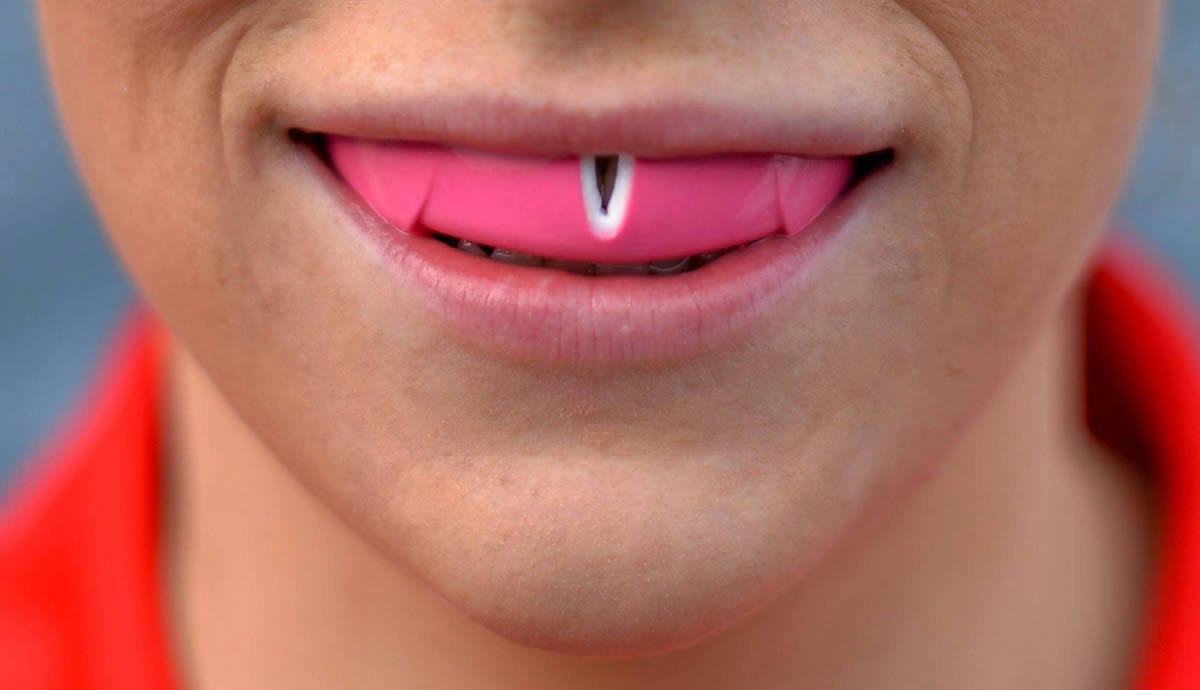
A mouthguard is a protective layer that covers the teeth, acting to cushion any knock or blow to the mouth and teeth. Generally, sporting mouthguards cover the upper teeth only. Mouthguards are hugely important in limiting the risk of mouth-related injuries to the cheeks, lips, tongue, and teeth, which is why dentists, dental specialists, sports coaches and other professionals highly recommend them!
Mouthguard Info+
Who are they for?
In New Zealand, the average knock to the face initially costs a pile of paperwork, pain, discoloured teeth, unsightly smiles, and poor long-term health of the teeth (even though ACC may cover the financial pain). Mouthguards are for adults and children who play contact sports e.g. rugby, football, martial arts, hockey, basketball, and water polo. However, even non-contact sports can pose a risk of dental injury so a mouthguard should be worn if there is a potential risk of falling over or getting a knock to the face e.g. gymnastics, skateboarding, mountain biking etc. For anyone with anterior fillings, bridges, implants or braces, mouthguards are highly recommended to keep these protected. If these are removable, such as plates or orthodontic retainers, they should be removed during sporting activities.
Profesionally fitted mouthguards
Professionally-fitted mouthguards are custom-made for each individual to be highly accurate, protective and comfortable. They are usually made of 1, 2 or 3 protective layers, which allows them to provide a lot of protection while maintaining maximal comfort. A dentist or orthodontist can make these by taking a mould of your teeth, and the mouthguard is layered, shaped, trimmed and polished over this mould. Because of the work and time involved in making these, and the specialised equipment and materials required, these are more expensive than the other types (approximate cost is around $250-$300, depending on the material used).
Boil and bite mouthgaurds
Boil and bite mouthguards can also be purchased at many sporting stores. These mouthguards are made from a temperature-sensitive material (thermoplastic), that turns soft when placed in hot water and hardens when cooled. This allows an amount of moulding to fit the shape of the teeth, using finger and tongue pressure. These fit better than the stock standard mouthguards over the teeth and tend to stay in place until removed. For anyone with braces, these are the recommended option. They do lack thickness, which makes them less cushion-like as compared to the custom-made professional mouthguards. The price range is between $20-50.
Stock standard mouthgaurds
Stock standard mouthguards are pre-formed and are purchased at a supermarket or chemist – they come ready to wear. They are inexpensive ( around $20-50) , however their fit cannot be adjusted… a “one size fits all” approach.They are not recommended by dentists/orthodontists as they are bulky, do not fit snuggly onto teeth, can fall out of the mouth easily, make breathing and talking difficult, and they provide little or no protection.
Looking after your mouthguard
- Rinse your mouthguard with cold water or clean it with mild soap regularly.
- If it is not in your mouth… Keep it safe! Place the mouthguard in a firm, perforated container.
- Protect the mouthguard from hot water, hot surfaces, or direct sunlight, to minimize it distorting its shape.
- Check the mouthguard regularly. If it becomes loose or you find holes, tears or cracks in it, replace it.